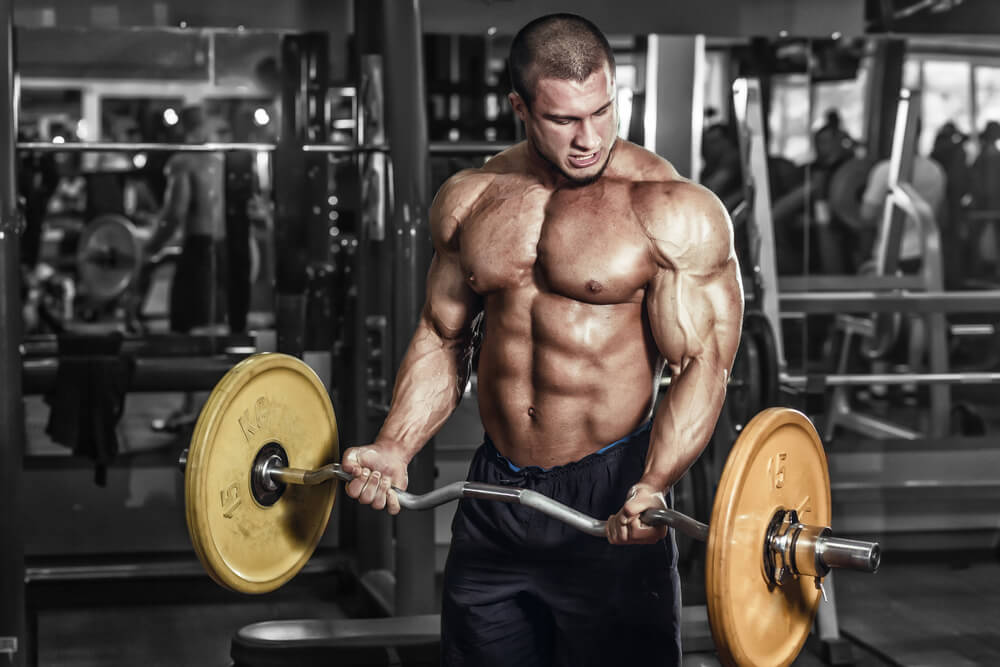
Building bigger arms couldn’t be more important to most trainers. Here are 10 ways to make the most of Best Bicep Exercises every session!
If there’s one muscle everyone admires and wants to add volume to have the largest biceps. Few things are more fun than tearing sleeves and having the confidence of knowing you can pull an impressive front double biceps. Every muscle has unique points that make training it special. The biceps are no different. If you want to look like Arnold and have arnold arms, you’ll need to first understand your biceps and then follow these techniques to make it happen.
This Is The Anatomy Of The Biceps
To properly train the biceps it’s vital to know the anatomy behind the muscle. First off, the main function is elbow flexion. In simpler terms, the biceps serve to close your arm by bringing your hand up to your shoulder. The secondary function is supination or rotation of the wrist.
Although we mainly think of the biceps as having two parts (hence bi), it’s actually made up of three parts. The main portion that makes up the bulk of the biceps is the long and short head. With that said, the brachialis is equally as important.
The short head is on the inside of the arms. That’s why it’s sometimes referred to as the inner head. The short head will make up a large mass of the arm when looking straight at the biceps. It is activated more so when the arms are less than shoulder width apart or in front of the body. This means exercises like narrow grip EZ bar curls and preacher curls predominately use the short head.
The long head is found on the outer edge of the arm. This is the part of the biceps that makes up that impressive peak. It’s activated more so by exercises that keep your arms by your side or wider. Exercises such as incline dumbbell curls or wide grip curls will use more of the long head. It should be pretty apparent the difference in stretch you feel between exercises that have your arms at your side compared to in front of your body. This difference in stretch is the emphasis of one of the biceps heads.
The brachialis is like a wax job on your car. It’s probably not worked on enough and can easily be forgotten. Still, you know to look your best it has to be trained. The brachialis is found on the outside of the arm between the long head of the biceps and the lateral head of the triceps. This muscle is best activated when the wrist is in a vertical or neutral position. The best way to train this muscle in this position is to do hammer curls.
Consequently, this also helps a lot with building up the forearm since it also activates the brachioradialis, the muscle on top of the forearm. It takes time for this muscle to show through, but anyone worth their salt has a beastly brachialis that puts microtears into their sleeves.
Now that you understand the biceps it’s time to get to work. Implementing any of these techniques is a surefire way to put the width of a valley and peak of a mountain on your arms.
10 Best Bicep Exercises to Add Volume
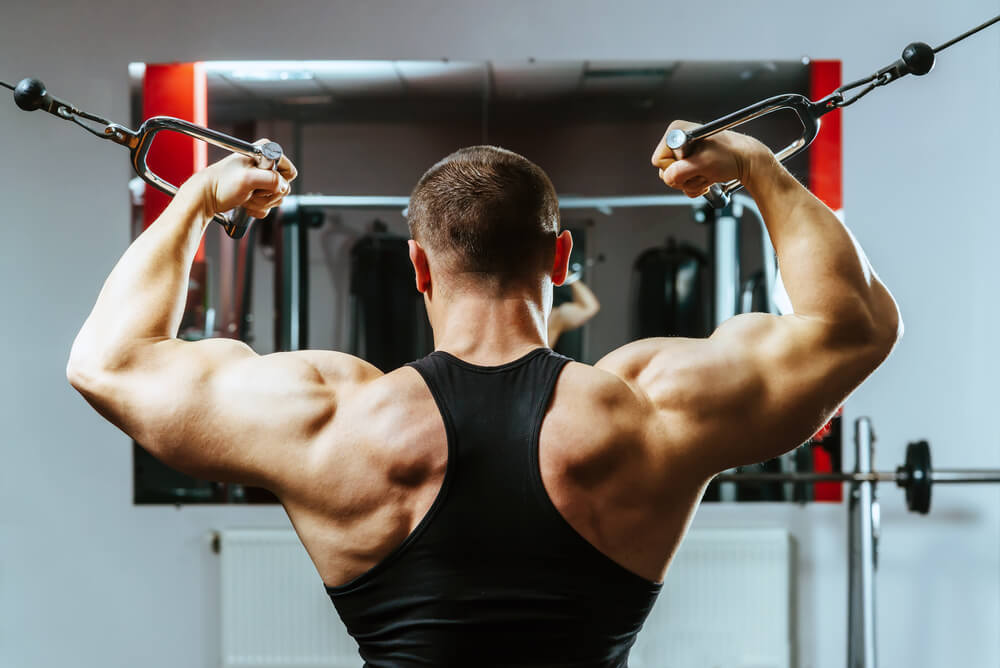
#1 Go Old School
It’s so easy to get caught up doing curls for the girls that we forget one of the best biceps exercises known to human history. Every young gun starts off doing push-ups in their basement to build up their chest and triceps. The back and biceps equivalent is chin-ups. This builds, even more, muscle than push-ups.
Consider how much weight you barbell curl. Now think about how much you weigh. It’s a guarantee that when you’re doing any variation of a chin-up that you’re subjecting the biceps to greater weight and stress, especially once you build the strength to do weighted chin-ups. Having the palms facing towards your body puts a high amount of tension on the biceps and they’re essentially performing the same motion as a curl. A narrower grip will emphasize the biceps even more and pull-ups will beef up the brachialis.
Like Popeye always ate his spinach, you should always do your chin-ups. An added bonus is the forearm development and grip strength you’ll get.
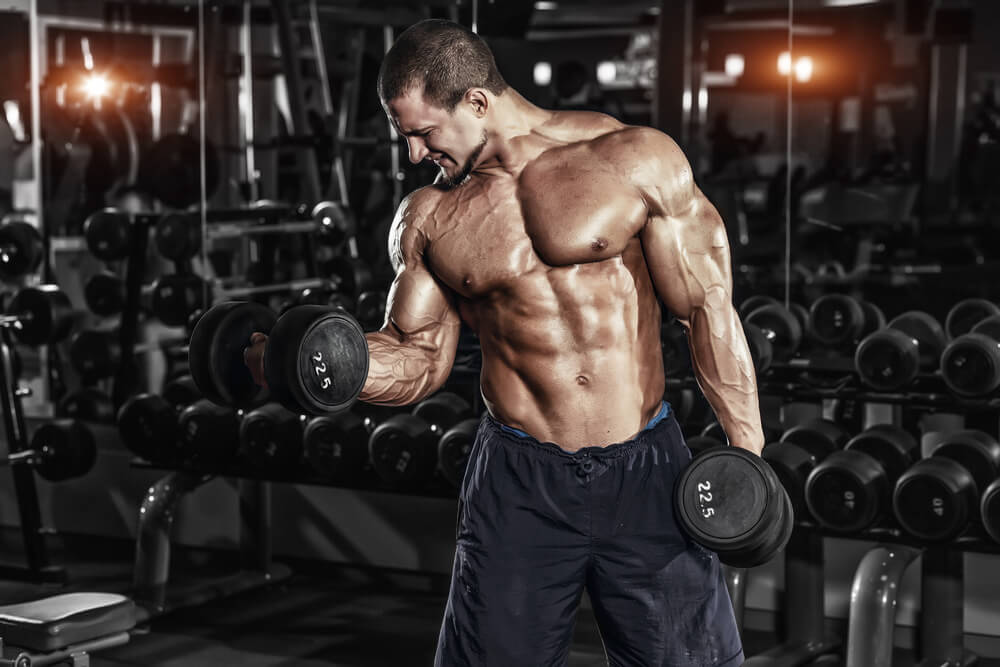
#2 It’s Not A Secret
The hidden gem of the biceps is the brachialis. Huge gains in arm size can be made by properly training it. The best exercises to get that bulge between your bicep heads and triceps are dumbbell or rope hammer curls and neutral grip pull-ups (palms facing each other).
Doing dumbbell curls with supination will also target the brachialis which is great for your big arm workout. Training like this won’t only make your arms bigger, it also helps with shoulder health by creating muscle balance in the arms and keeping the biceps tendon strong. Make sure you don’t get too caught up only training with a supinated wrist and ensure you train all parts of your biceps.
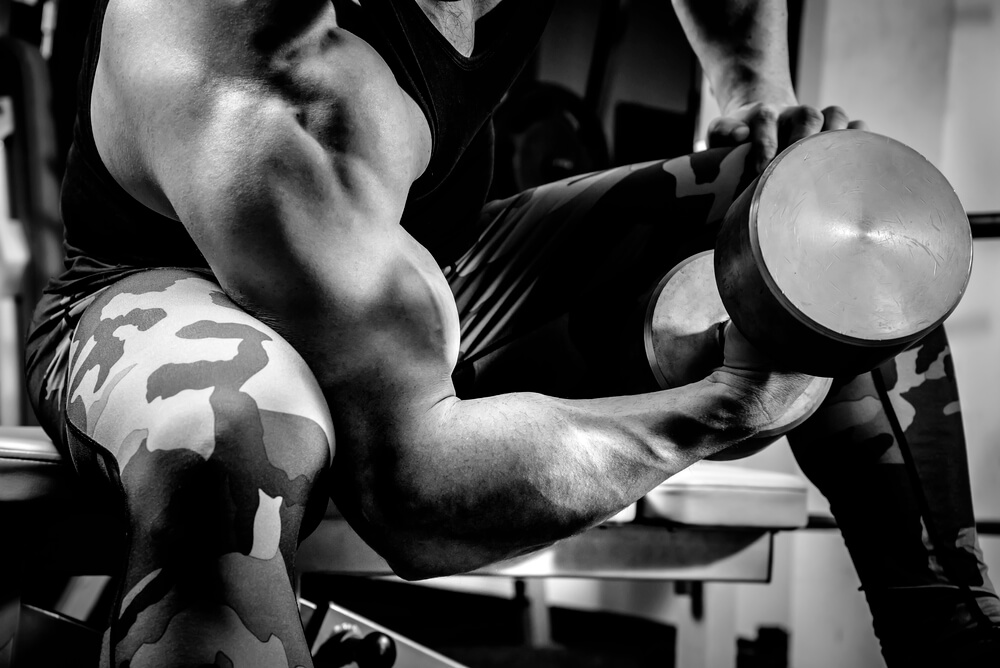
#3 Slow It Down
We all want to lift as much weight as possible. The problem is that it usually leads to lifting at faster tempos. It’s important to remember that the bulk of muscle damage actually happens during the eccentric or lowering portion of the exercise, which is most effective at a slow tempo.
Rather than lowering the weight rapidly, intentionally lowering the weight with a tempo of at least two seconds shreds your biceps. As you become used to this tempo try to increase the eccentric portion to four seconds on at least one exercise each time you train biceps. To make sure you follow a strict tempo, count out the seconds in your head or have a training partner place their hands under the bar setting the tempo for you.

#4 I Go You Go
A good finisher always makes a difference in the quality of your workout. While this technique is best done with a partner, you can go against yourself as well. Pick an exercise you’d like to finish your biceps training with (EZ bar curls work well) and a weight you and you can do 12 reps with. It’s best to use the same weight as your partner, but you can each have your own weight with your workout schedule.
Start with partner one doing as many reps as possible. As soon as the first partner hits failure, the second partner begins. Trade back and forth until neither of you can do any more reps.
Essentially, you’ll be doing less and less reps with decreasing rest time. If you don’t have a partner, look at the clock and see how long each round takes you and use that as your rest period. You’ll quickly find that this method takes serious mental fortitude.

#5 Double Up!
Attack your biceps from all angles for a complete burnout. Since the biceps have so many different parts an effective training tactic is to superset workouts or do two exercises back to back that focus on different parts of the biceps. For example, do 12 reps of incline dumbbell curls, then immediately perform 12 reps of preacher curls. Repeat this for three sets.
This combo ensures you hit the short head, long head and brachialis. Experiment with different exercise combos. Just make sure that each exercise is hitting a different angle thus emphasizing different aspects of the biceps.
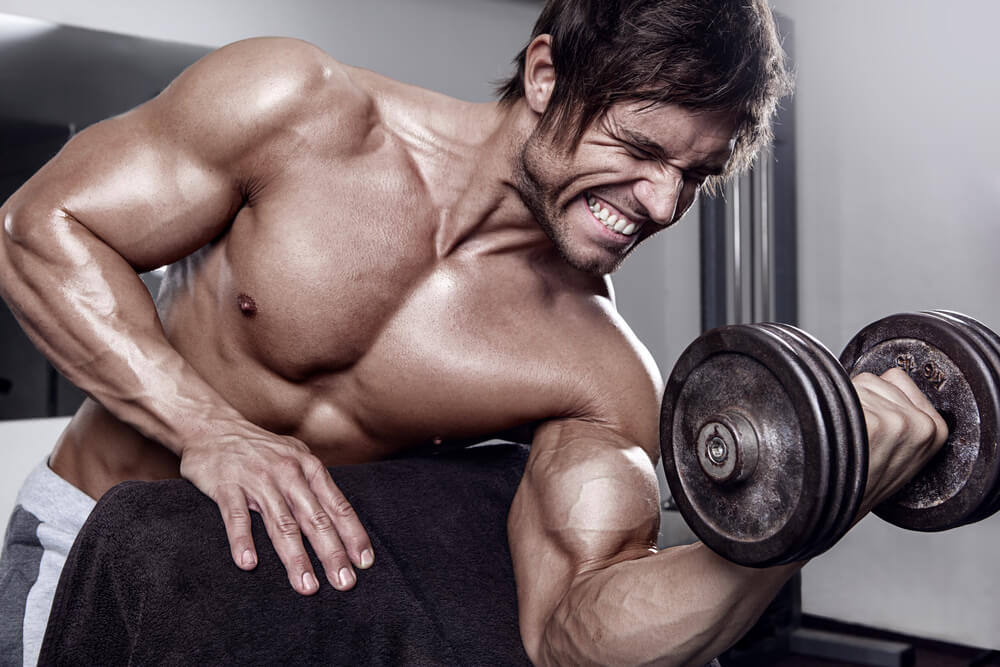
#6 Prioritize Your Training
It may seem obvious, but to build up a muscle it has to be emphasized in your workout program. Your biceps will never reach their potential if you only do a few haphazard sets at the end of your workout once a week.
To truly build up your biceps you’ll need to hit them while they’re fresh. To prioritize building your biceps, implement an arm day where you can hit your biceps with the maximum weight possible for 12 to 15 total sets.

#7 If A Little Is Good, More Is Better
Just as important as putting your full energy into one tough training session, hitting the biceps multiple times per week will stretch the measuring tape. There are many ways you can do this.
One example is training biceps twice per week. Train them once with back and another time on arm day. A more innovative method is to train biceps whenever you train triceps with a twist. For instance, in addition to your normal biceps training, you can also lightly train biceps on your chest workout and triceps workout. Do this by super setting biceps exercises with triceps exercises, but perform 12 to 15 reps on these exercises and don’t train to failure.
These extra sets with non-maximal weight help with hypertrophy, pumping the muscle up with blood and signaling to the body to send nutrients to this muscle and repair it. You may have to train through some soreness, but your body will adapt and grow. Don’t fret too much about soreness, though, the biceps recover very quickly as they’re a smaller muscle in comparison with the rest of your body.
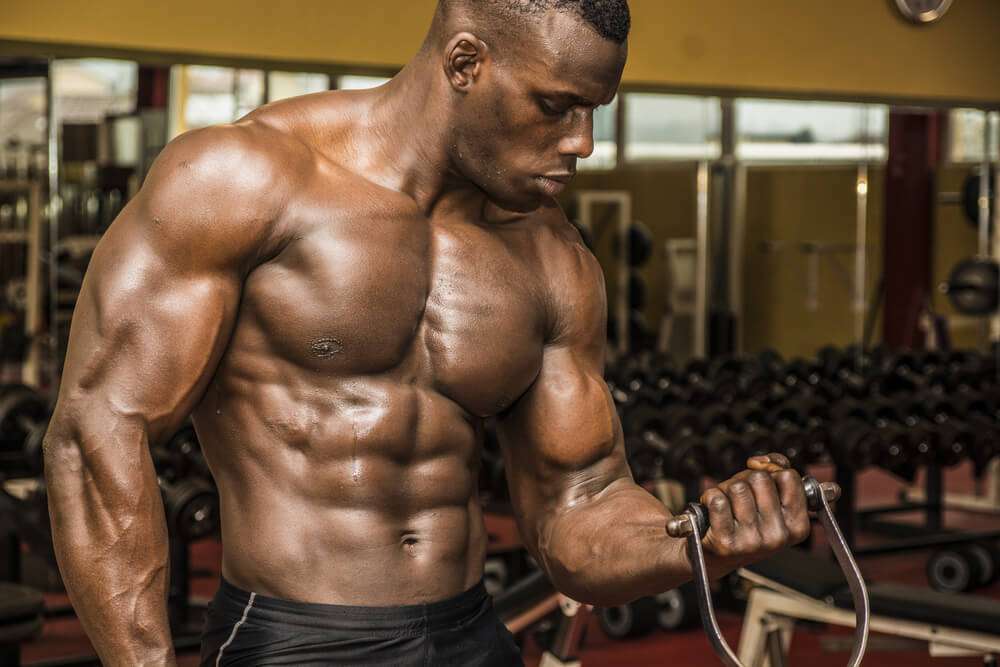
#8 Time For A 21 Gun Salute
The old school volume training methodologies focused on achieving the addictive pump. Doing many high rep sets although effective is very time consuming to the tune of at least two hours per session. Thankfully we can derive a tactic from this training that will achieve a huge pump in a very short amount of time.Workout 21s will give you the biggest biceps pump you’ve ever had leaving your arms lifelessly dangling by your sides.
It involves breaking down an exercise into three parts, which each consist of seven reps. Using the cable curl for example, you do the first seven reps only with the bottom half of the motion, the next seven with the top half and the final seven with the full range of motion. It takes a very minimal amount of weight but you do want to hit failure. Try this technique either as a warm-up or try the best finishing moves by completing two or three sets.
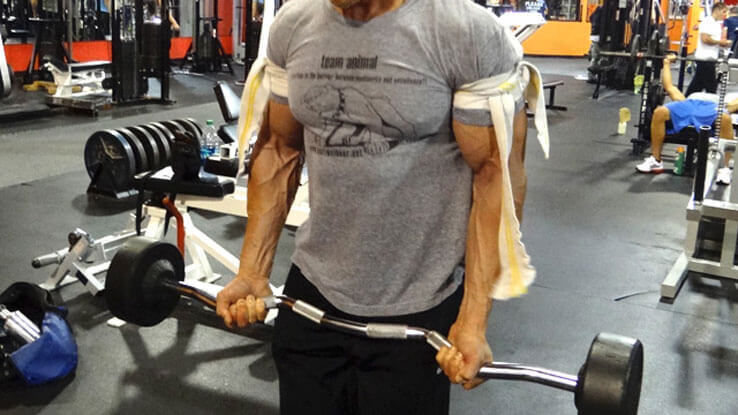
#9 Occlusion Training Could Help
Also known as blood flow restriction training, this is one of the more drastic methods to spur on muscle growth. Use with caution. As the name implies it involves actually cutting off circulation to the muscle and using occlusion training bands. Muscle contractions cause blood pooling (also known as the pump) in the muscle since each contraction essentially traps blood in the muscle.
Using large rubber bands or their bands to tie around your upper arm will cause blood pooling to a greater degree, creating a most colossal pump taking the biceps to new volume. The lack of blood flow also means that there will be no oxygen going to the muscle. This means that the muscle will fatigue very quickly and not be able to lift much weight, but no worries you won’t need to lift much.
As an intro to occlusion training, tie the straps around your upper arms and do not remove them till every set is complete. For the first set do 30 reps with 20% of your one rep max, and then perform five sets to failure with 50% of your one rep max. Rest for 45 seconds between sets. Once the sets are done, remove the bands so your muscles can oxygenate. Trust me, this is much tougher than it sounds. As you become accustomed to the technique you can increase the volume gradually and then the load.

#10 Bands Make Her Dance
Actually, in this case, bands will be making you do a dance with all the muscle growth you’re about to undergo. With biceps it’s very easy to lose tension at the bottom of the move as your arms are fully extended and the weight can rest on your body. It’s also easy to lose tension at the top of the movement in exercises like the preacher curl.
To avoid losing valuable tension you’ll strap on elastic bands. The handle of the bands can be looped around the bar as you stand on the band or for dumbbells you can hold both the handles and weights in your hands.
To truly get the full effect of bands use them on preacher curls. Either loop the band under the bottom of the preacher curl legs or place two heavy dumbbells on the ground as anchors. Now rather than losing tension at the top of the movement, it will actually be much harder since the bands provide constant tension throughout and will be stretched the most at the top of the movement. There’s no doubt you’ll feel feeble while struggling to move the bar two inches, but that’s the journey you have to take for a couple formidable pythons.
Conclusion
There are plenty of tactics and methods you now have at your disposal to add volume to your biceps. Make sure to use your new and improved arms wisely and responsibly. You’ll know you’ve done your biceps justice when you can barely even lift your arms to wash your hair post-workout.
By Raphael Konforti, MS, CPT
Latest posts by Raphael Konforti (see all)
- The Best 4 Day Workout Split For Greater Gains - Feb 6, 2017
- The Best Lower Chest Workout For A Better Body - Aug 15, 2016
- How To Get Rid Of Shin Splints - Jul 7, 2016









[…] http://gymjunkiesmain.wpengine.com/best-bicep-exercises-to-add-volume/ […]
[…] Genetics do play into this but there are always ways to break past your genetic makeup and make those bicep muscles grow! Spider curls are great for making your biceps look like mountains. […]
[…] is lost. This isn’t necessarily a bad thing if it’s an irregular occurrence: Aiming for fewer microtears, in some sessions, is a good strategy to improve recovery times for compound lifts later in the […]
[…] is lost. This isn’t necessarily a bad thing if it’s an irregular occurrence: Aiming for fewer microtears, in some sessions, is a good strategy to improve recovery times for compound lifts later in the […]
[…] is lost. This isn’t necessarily a bad thing if it’s an irregular occurrence: Aiming for fewer microtears, in some sessions, is a good strategy to improve recovery times for compound lifts later in the […]